
emperor in history
Iran Budget Tours
Hotel & Transfer
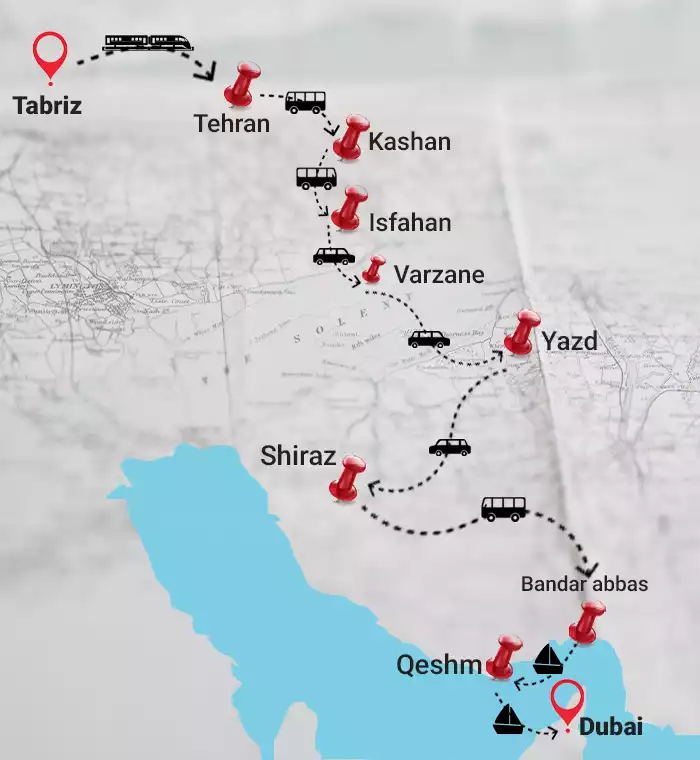
Turkey to Dubai
If you are coming to Iran by land & want to cross Iran without having to fly & cross the Persian gulf by ferry
Tabriz - Tehran - Qeshm - Dubai
Surfing, Boating
Age: 18+
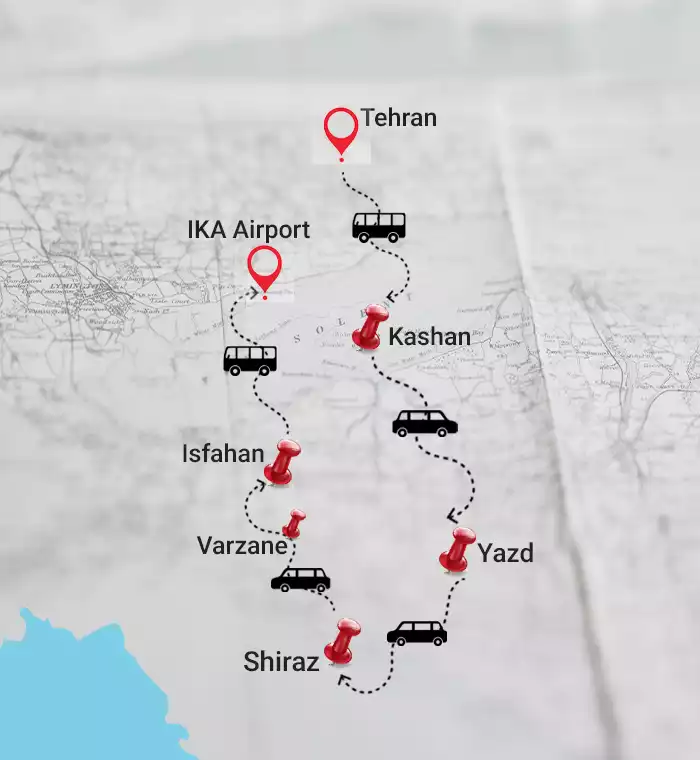
Discover Iran in Depth
One big circle around Iran and visit most sees of the country in this 2 weeks Iran tour
Tehran - Isfahan - Varzaneh - Shiraz - Yazd - Kashan
Surfing
Age: 18+
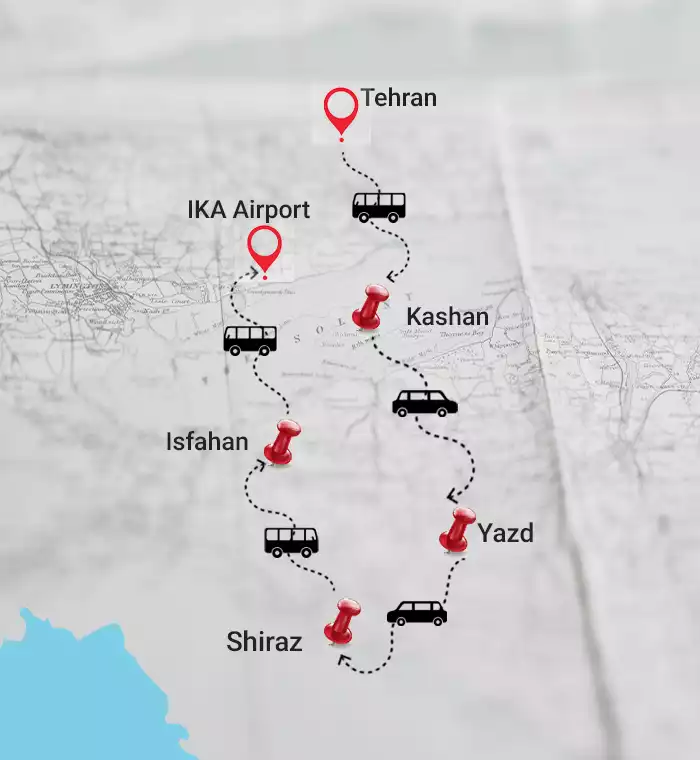
Explore Iran on Budget
This tour is a perfect choice for a budget travelers who prefers a little bit comfort in booked services
Tehran - Isfahan - Shiraz - Yazd - Kashan
Surfing
Age: 18+
Iran Comfort Tours
Local Guides + Hotel & Transfer
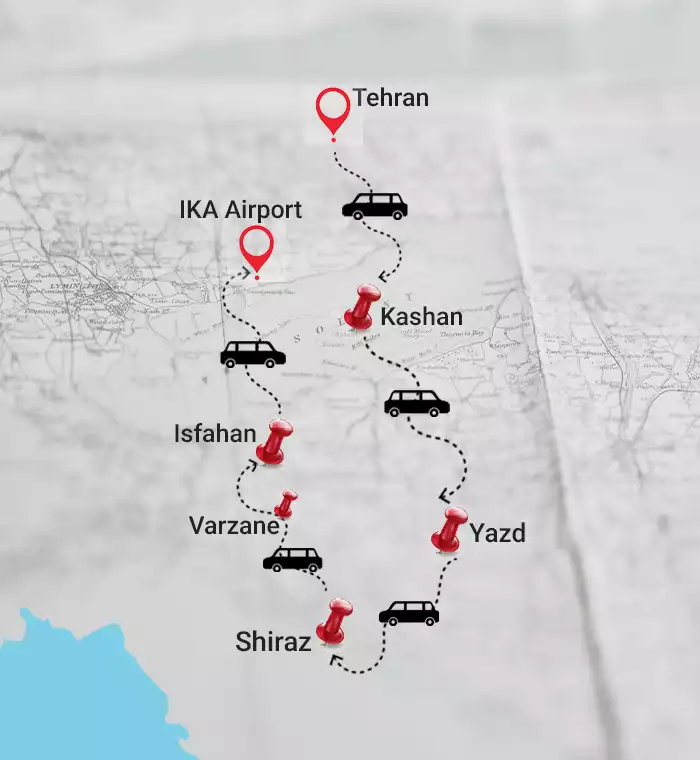
Deep Dive in Persian Culture
Explore Iran must sees with amazing local guides who love to show their cities to travelers
Tehran - Isfahan - Varzaneh- Shiraz - Yazd - Kashan
Surfing, Boating
Age: 18+
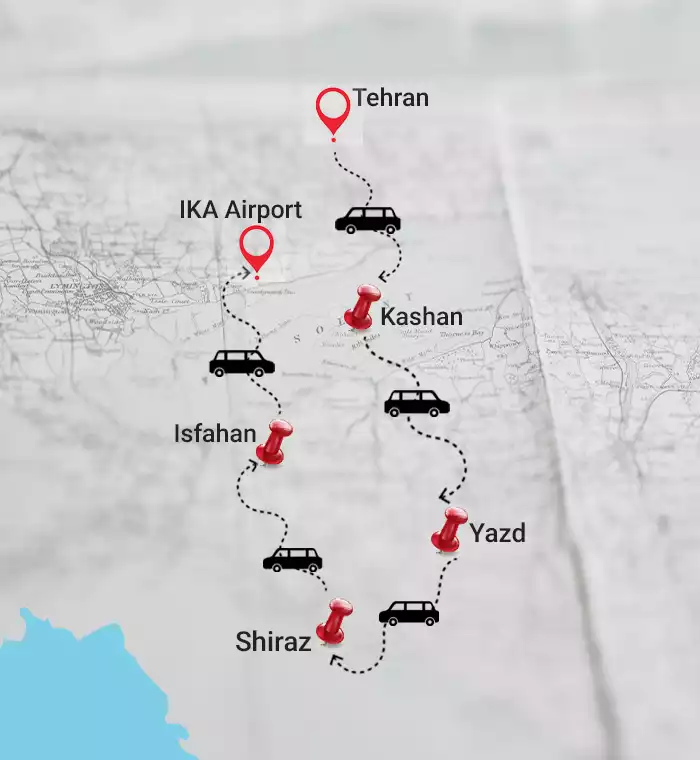
Explore Through Local Eyes
If you are a perfectionist and want to fit all Iran must sees in one trip, then this Iran tour is the best option
Tehran - Isfahan - Shiraz - Yazd - Kashan
Surfing, Boating
Age: 18+
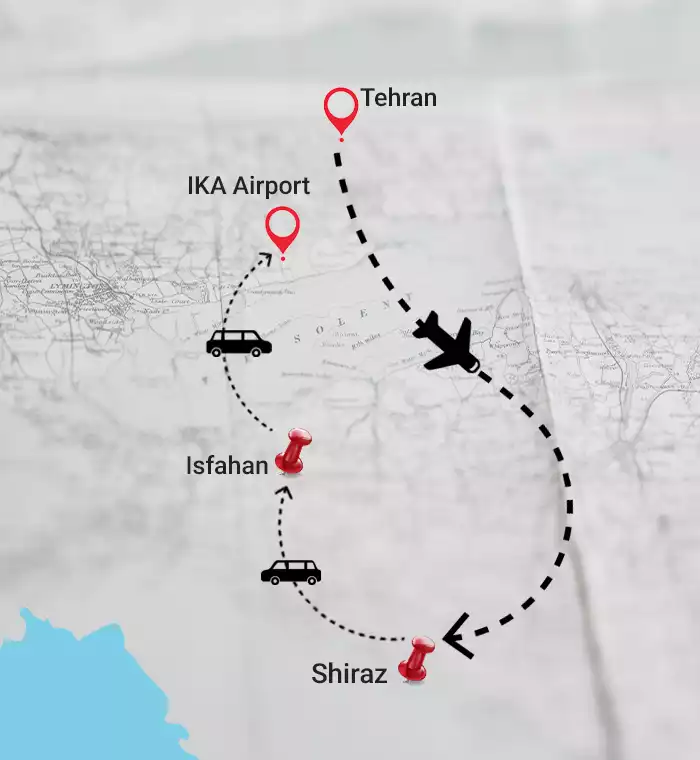
Iran at a Glance
If you have a short holiday & want to see the essentials of Iran on a budget, this tour is for you
Tehran - Isfahan - Shiraz
Surfing, Boating
Age: 18+
Iran Premuim Tours
Escort Guides + Hotel & Transfer, Entrances Fees
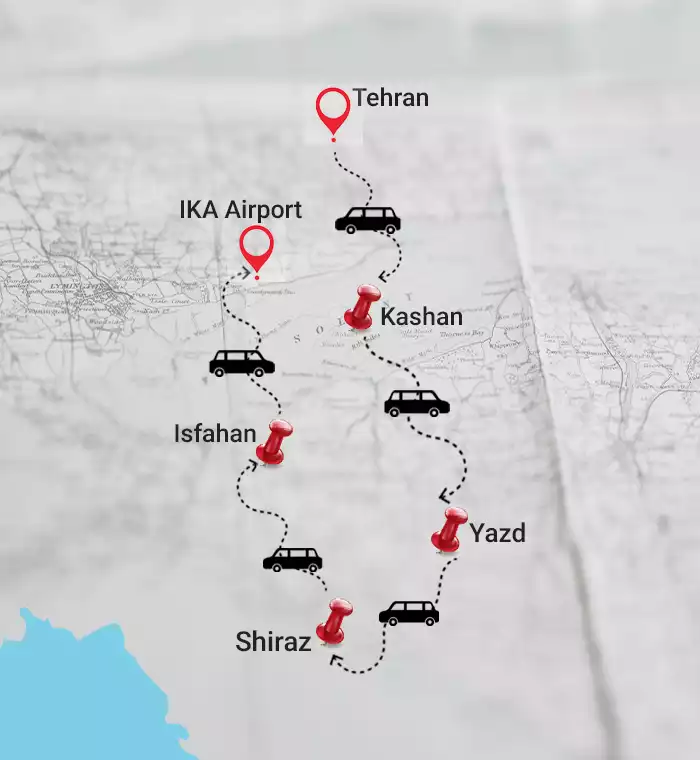
Handicrafts & Culture
Visit classic bazaars with workshops that haven’t changed much in centuries on this tour.
Tehran - Isfahan - Shiraz - Yazd - Kashan
Surfing
Age: 18+
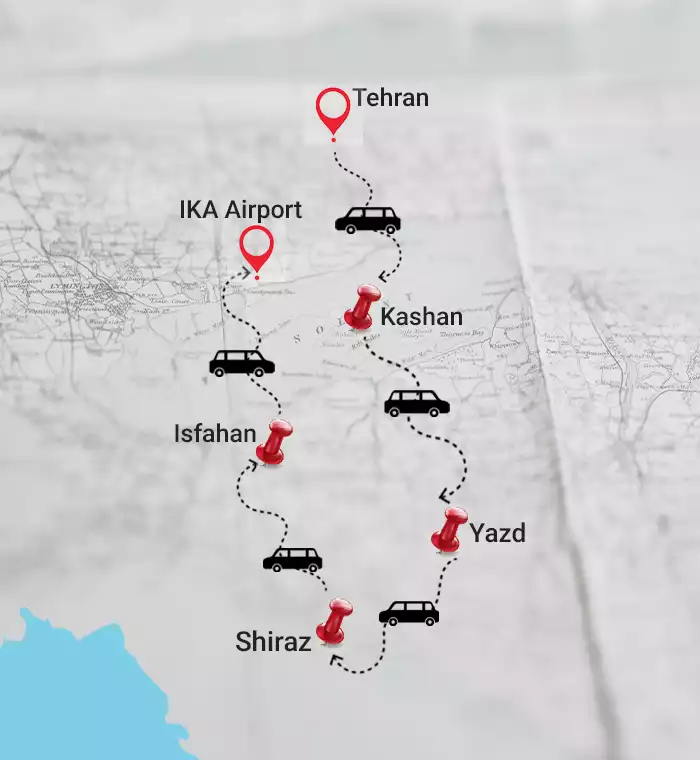
History & Culture
A complete introduction to Iran’s cultural and historical heritage in 10 days.
Tehran - Isfahan - Shiraz - Yazd - Kashan
Surfing
Age: 18+
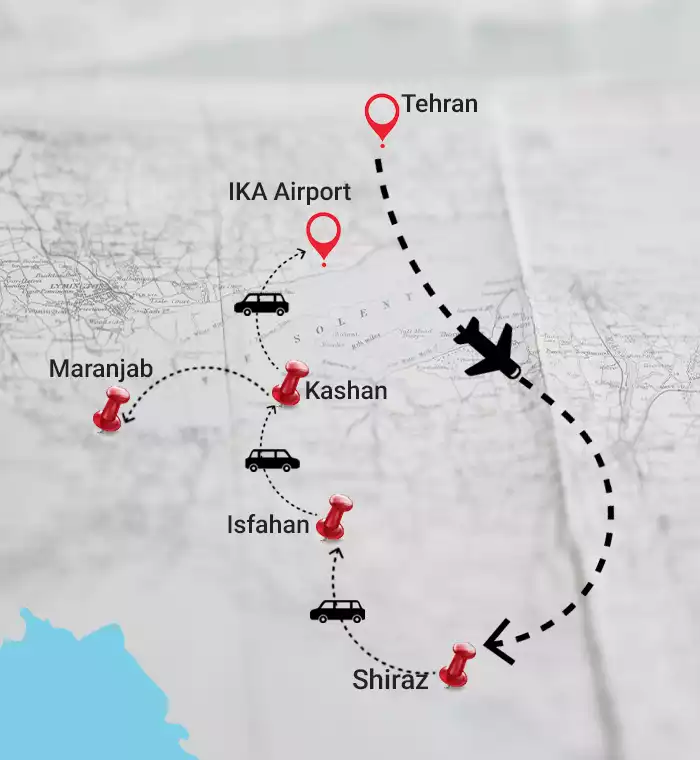
Caravansary & Bazaar
Explore Iran like a traveling merchant in the ancient and still-thriving bazaars along the silk road.
Tehran - Isfahan - Shiraz - Maranjab - Kashan
Surfing
Age: 18+
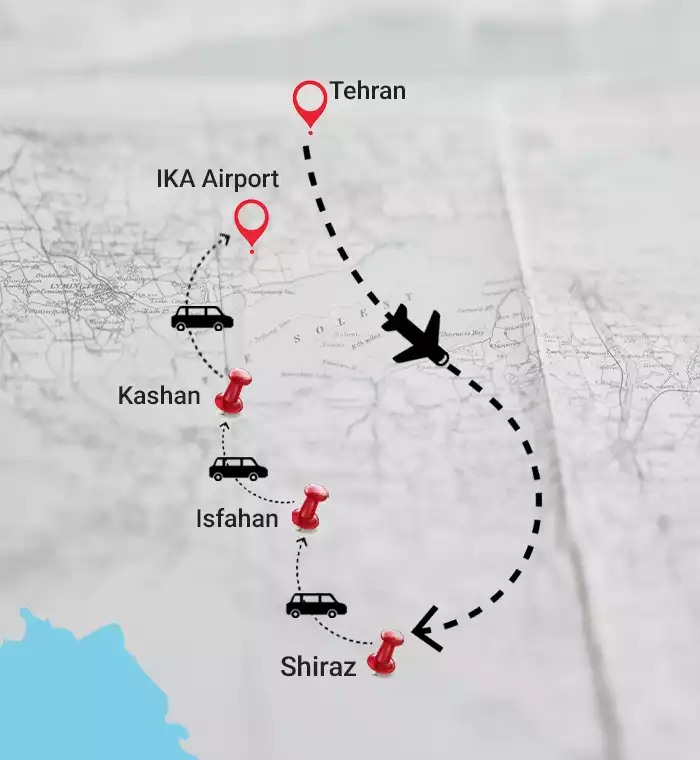
History & Culture
A week-long, short & sweet summary of Iran’s cultural and historical heritage
Tehran - Isfahan - Shiraz - Yazd - Kashan
Shiraz
Surfing
Age: 18+
Persepolis, also known as Takht-e Jamshid, was an ancient city located in present-day Iran. It served as the ceremonial capital of the Achaemenid Empire, one of the greatest empires in ancient history, and was constructed by the Persian king Darius the Great in the 6th century BCE. Persepolis is renowned for its grandeur and architectural brilliance, reflecting the wealth and power of the Persian Empire.
The construction of Persepolis began around 518 BCE and continued for several decades. The city was strategically located on a terrace of the Marvdasht Plain, at the foot of the Kuh-i Rahmat (Mountain of Mercy), in the province of Fars. Perspolis was designed as a complex of monumental buildings, including palaces, audience halls, administrative structures, and other impressive structures.
The buildings at Persepolis were built primarily using limestone and adorned with intricate stone carvings and elaborate reliefs. The reliefs depicted various scenes, such as battles, processions, and tribute-bearing delegations from different parts of the empire. These reliefs provide valuable insight into the Achaemenid Empire's culture, politics, and interactions with other civilizations.
.
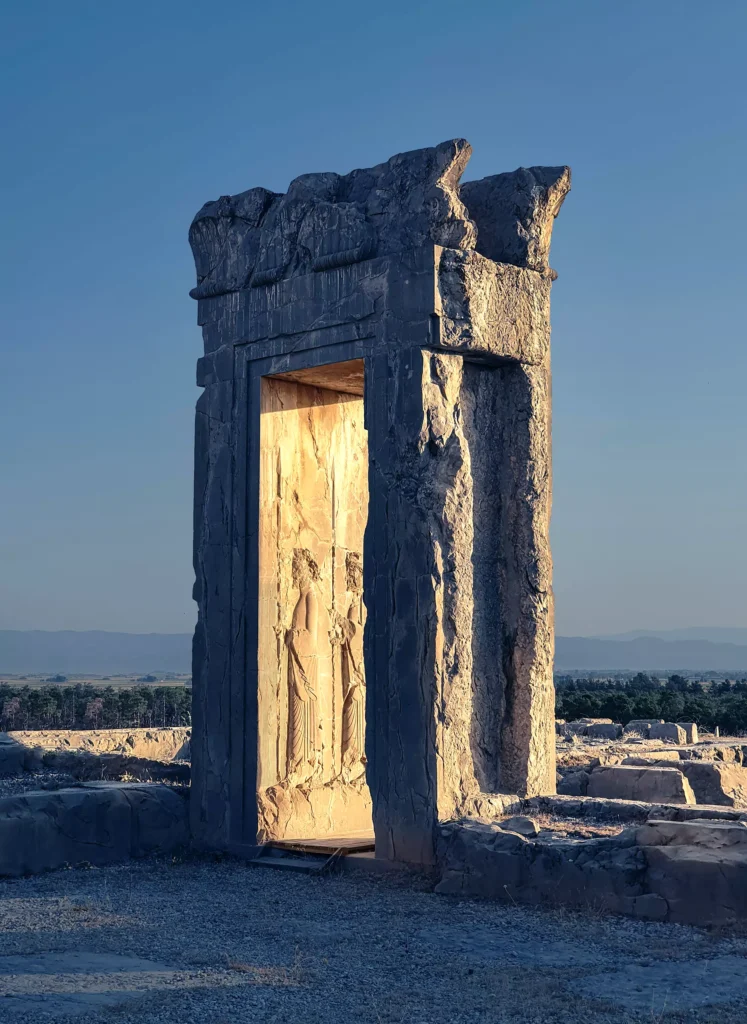
The most notable structures within Perspolis include the Apadana (audience hall), the Throne Hall, the Hall of Hundred Columns, the Tachara (palace of Darius I), and the Hadish (palace of Xerxes I). Each of these structures served different functions within the ceremonial capital.
Unfortunately, Persepolis was not destined to stand for eternity. In 330 BCE, Alexander the Great of Macedon invaded Persia and set fire to the city, causing significant damage. The reasons behind this act are debated, with some suggesting it was due to Alexander’s rage, while others propose strategic motives. Regardless, the fire ravaged much of the city, leading to its decline and eventual abandonment.
Today, Perspolis stands as an archaeological site and is recognized as a UNESCO World Heritage Site. Its ruins continue to attract visitors from around the world who marvel at the remnants of this ancient capital and its architectural splendor. The site offers a glimpse into the grandeur and sophistication of the Achaemenid Empire and serves as a testament to the rich history of Iran
where is takhte jamshid?
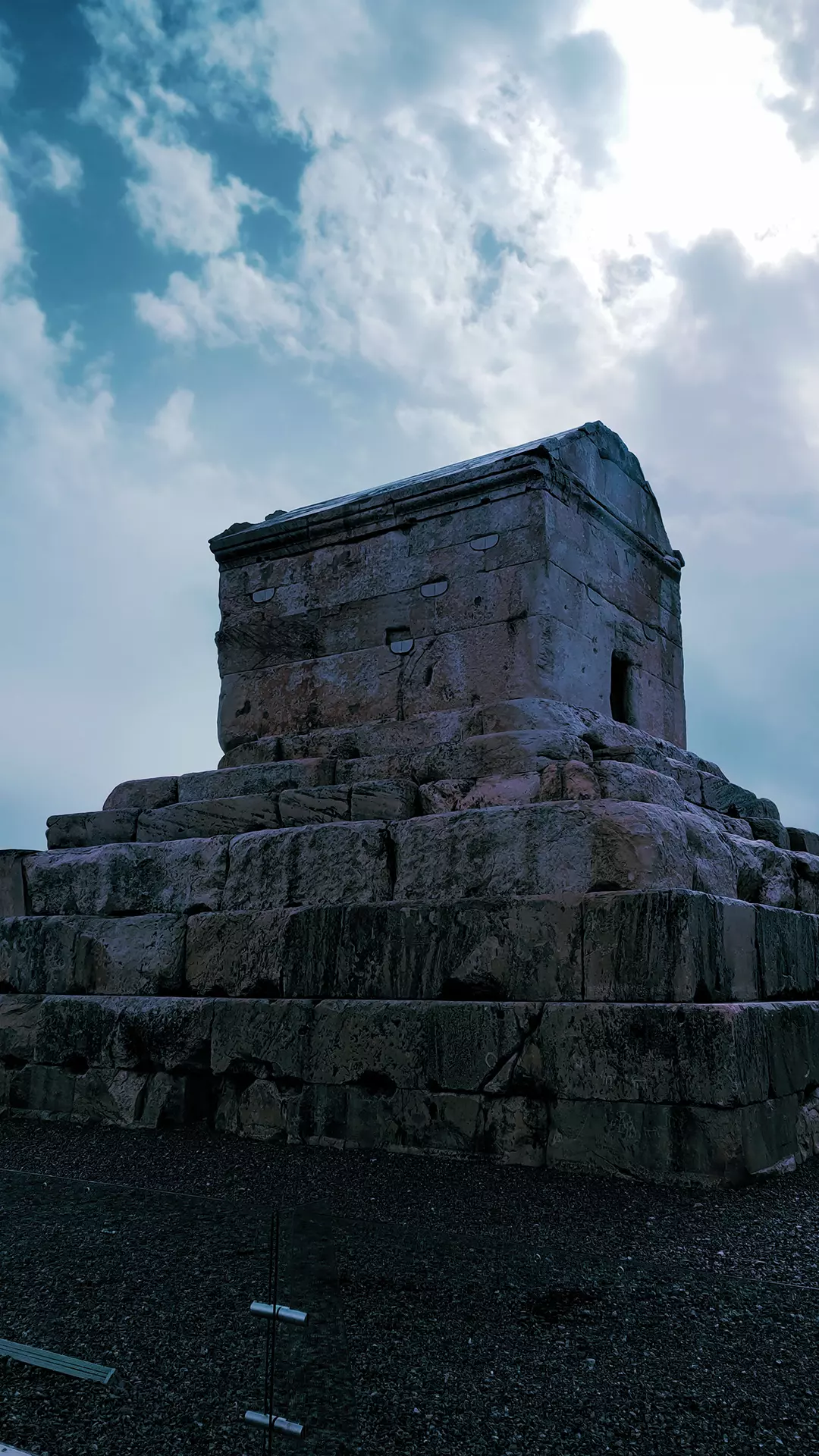
Takht-e Jamshid, also known as Persepolis, is located in the southwestern region of Iran, specifically in the province of Fars. It is situated approximately 60 kilometers northeast of the modern city of Shiraz. The archaeological site of Perspolis covers a vast area on a terrace of the Marvdasht Plain, at the foothills of the Kuh-i Rahmat (Mountain of Mercy). The site offers panoramic views of the surrounding landscape and is easily accessible for tourists and visitors.
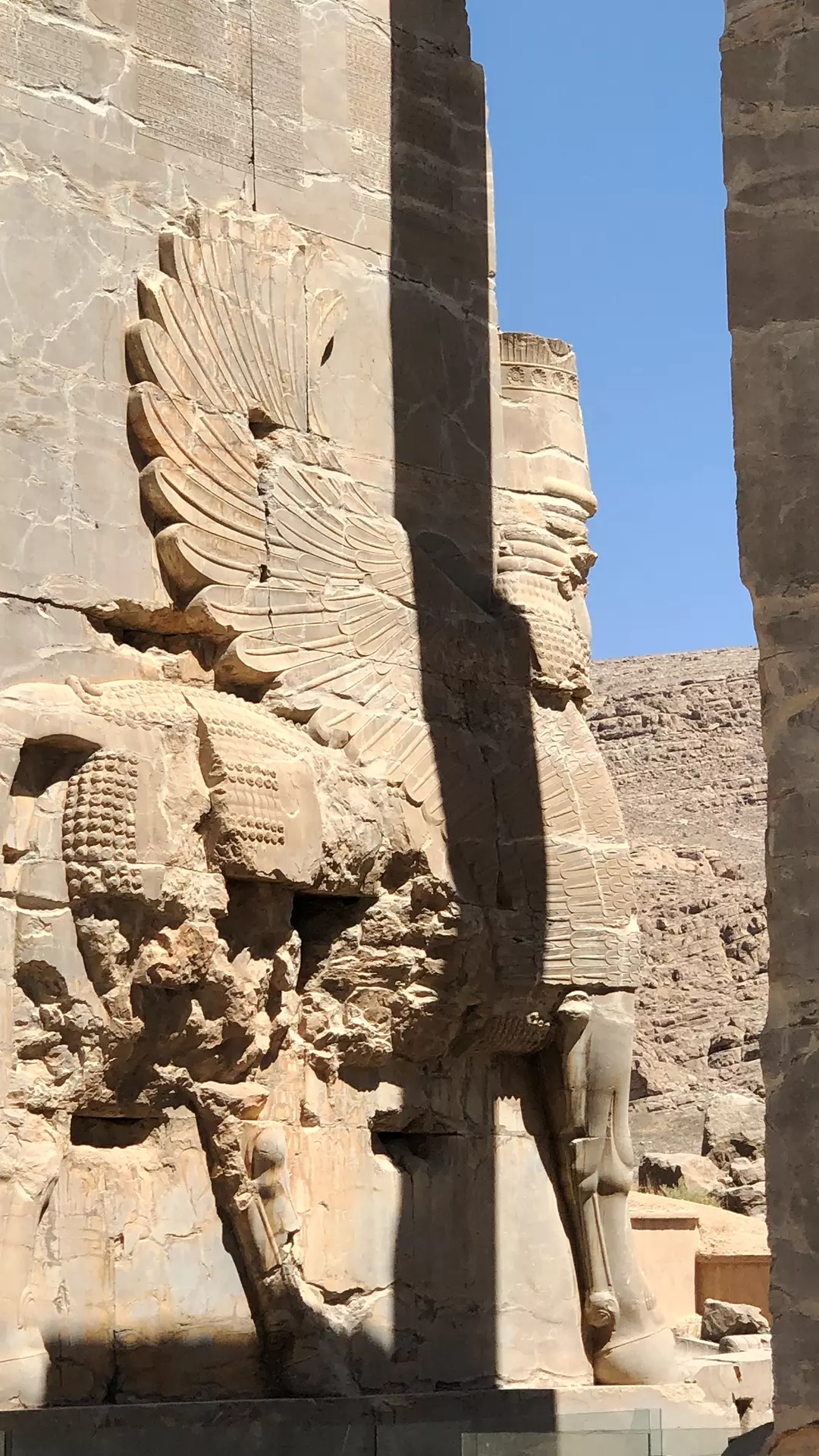
thakhte jamshid history
The history of Takht-e Jamshid, also known as Persepolis, dates back to the Achaemenid Empire, one of the most powerful ancient empires in history. Here is a brief overview of its historical significance:
Construction: Persepolis was built during the reign of Darius the Great, who ascended to the Persian throne in 522 BCE. It was designed to serve as the ceremonial capital of the empire and to showcase the grandeur and wealth of the Persian kings. Construction of Perspolis began around 518 BCE and continued under subsequent Achaemenid kings, including Xerxes I and Artaxerxes I.
Purpose: Persepolis served as a ceremonial center and administrative hub of the Achaemenid Empire. It was not a city where people lived permanently but rather a site for grand celebrations, religious ceremonies, and audience receptions. It symbolized the authority and power of the Persian kings, while also serving as a place for interaction with delegations from various parts of the empire.
Architectural Splendor: Perspolis was constructed using limestone and adorned with elaborate stone carvings and reliefs. The buildings within the complex were designed with great precision and featured impressive architectural elements. Notable structures include the Apadana (audience hall), the Throne Hall, the Hall of Hundred Columns, and several palaces. The reliefs depicted scenes of battles, royal processions, tribute-bearing delegations, and mythological figures.
Alexander the Great and Destruction: In 330 BCE, Alexander the Great of Macedon invaded Persia and captured Persepolis. The city was subsequently set on fire, causing significant damage to its structures. The motivations behind Alexander’s decision to burn Perspolis are debated among historians. Some suggest it was an act of vengeance, while others propose strategic reasons. Nevertheless, the fire resulted in the decline and abandonment of Perspolis as a center of power.
Rediscovery and Excavation: Perspolis remained largely forgotten and buried until the early 17th century when European travelers and scholars began to explore the region. However, major archaeological excavations did not take place until the 1930s. The work, led by Iranian and international teams, unearthed the impressive ruins of Persepolis, allowing for the study and preservation of this significant ancient site.
Today: Perspolis is recognized as a UNESCO World Heritage Site and continues to attract visitors from around the world. Its ruins provide valuable insights into the art, architecture, and history of the Achaemenid Empire. The site stands as a testament to the splendor and cultural achievements of ancient Persia and holds immense significance in Iran’s national identity.
persepolis architecture
The architecture of Persepolis, also known as Takht-e Jamshid, is renowned for its grandeur, precision, and artistic brilliance. The Achaemenid architects and craftsmen who designed and constructed Perspolis created a unique architectural style that reflected the power and wealth of the Persian Empire. Here are some key features and elements of Persepolis’ architecture:
Terrace Design: Perspolis is built on an elevated terrace that was artificially created by leveling the natural terrain. The terrace provided a solid foundation for the monumental structures and allowed for better visibility and prominence.
Monumental Gateways: The entrance to Perspolis was marked by monumental gateways or propylaea. The most famous of these gateways is the Gate of All Nations, featuring massive stone columns, intricate reliefs, and monumental winged bulls known as lamassu.
Palaces: Persepolis housed several palaces, including the Tachara (palace of Darius I) and the Hadish (palace of Xerxes I). These palaces were multi-level structures with impressive halls, residential quarters, and courtyards. The palace interiors were adorned with elaborate stone carvings, reliefs, and frescoes depicting various scenes.
Apadana (Audience Hall): The Apadana was the largest and most significant building in Persepolis. It was an audience hall where the Persian kings received and held audiences with delegations from different parts of the empire. The Apadana had grand double staircases, massive columns, and intricately decorated walls with relief sculptures depicting tribute-bearing delegations.
Hundred Column Hall: The Hall of Hundred Columns was another remarkable structure in Persepolis. As the name suggests, it featured rows of columns, each adorned with intricate carvings. The hall was likely used for various functions, including banquets and gatherings.
Stone Carvings and Reliefs: Persepolis is known for its intricate stone carvings and reliefs, which adorned the facades of the buildings. These reliefs depicted a wide range of subjects, such as battles, royal processions, court scenes, and mythological figures. The reliefs served both decorative and narrative purposes, providing insights into the Achaemenid Empire’s culture, politics, and interactions with other civilizations.
Architectural Elements: Persepolis featured architectural elements such as massive stone columns, ornate capitals, friezes, cornices, and intricate stone carvings on doorways and windows. The design incorporated a combination of Persian, Mesopotamian, and Egyptian influences, showcasing the Achaemenid Empire’s cosmopolitan character.
The architecture of Perspolis represents the pinnacle of Achaemenid artistic and engineering achievements. The combination of monumental scale, intricate details, and artistic sophistication continues to fascinate visitors and scholars alike, providing valuable insights into the ancient Persian civilization.
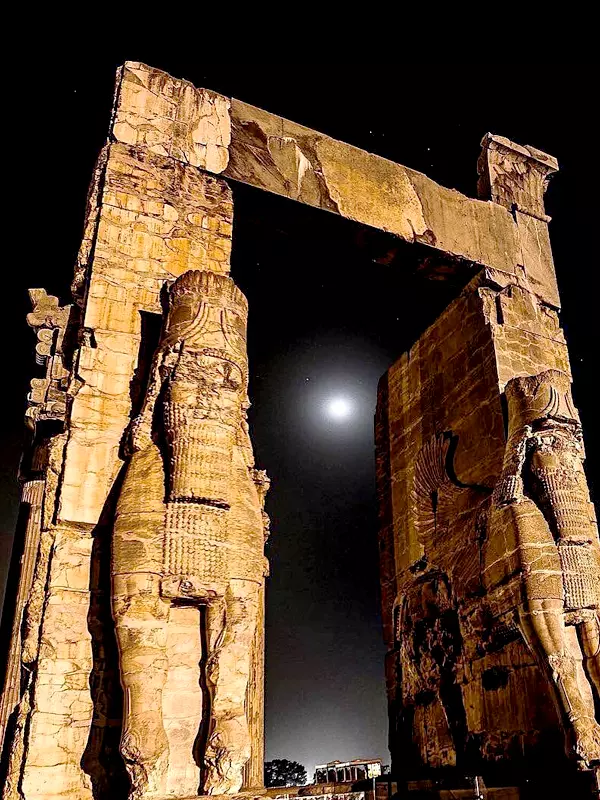
Monumental Gateways
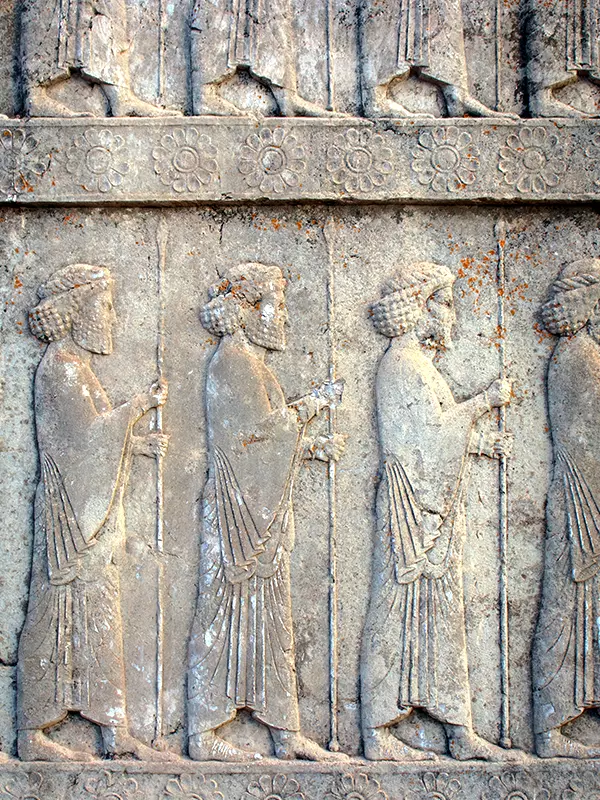
Apadana (Audience Hall)
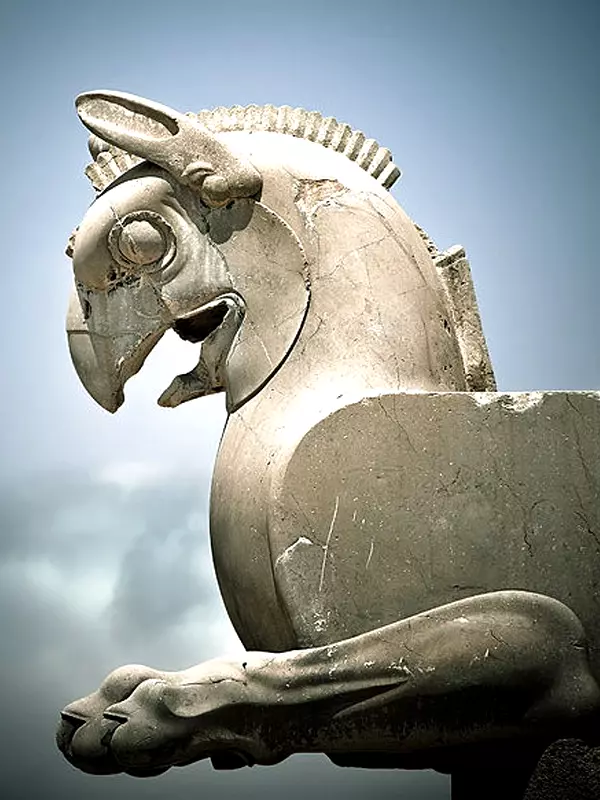
Architectural Elements
what is the significance of perspolis
Persepolis holds immense significance in several aspects:
Political and Administrative Center: Perspolis served as the ceremonial capital and administrative hub of the Achaemenid Empire. It was the place where Persian kings received and held audiences with delegations from various parts of their vast empire. The complex was a symbol of the empire’s power, showcasing the wealth and authority of the Persian rulers.
Achaemenid Empire’s Cultural Identity: Persepolis reflects the cultural identity and achievements of the Achaemenid Empire. Its architecture, art, and inscriptions provide insights into the empire’s religious beliefs, political ideology, and interactions with other civilizations. The reliefs and carvings depict scenes of battle, tribute-bearing delegations, and courtly rituals, shedding light on the empire’s culture and rituals.
Historical and Archaeological Importance: Persepolis is a UNESCO World Heritage Site and is considered one of the most important archaeological sites in the world. Its ruins offer a unique opportunity to study and understand the Achaemenid Empire and its contributions to ancient history. The site provides a tangible link to the past and contributes to our knowledge of ancient Persia.
Symbol of National Identity: Perspolis holds great significance in modern-day Iran and is considered a symbol of national pride. The site represents the rich heritage and historical legacy of Iran, reinforcing its cultural and national identity. It serves as a reminder of Iran’s ancient greatness and contributions to civilization.
Tourist Attraction and Cultural Tourism: Persepolis attracts tourists from around the world who come to marvel at its architectural splendor and historical significance. The site’s grandeur and unique cultural heritage make it a popular destination for cultural tourism, contributing to the local economy and promoting cross-cultural understanding.
Overall, Persepolis is significant as a testament to the grandeur and achievements of the Achaemenid Empire, a reflection of ancient Persian culture, and a symbol of Iran’s rich historical heritage. It stands as a reminder of the enduring legacy of ancient civilizations and continues to captivate visitors with its architectural brilliance and historical importance.

how old is takhte jamshid?
Takht-e Jamshid, also known as Persepolis, is estimated to be around 2,500 years old. Construction of Perspolis began around 518 BCE during the reign of Darius the Great, who was the king of the Achaemenid Empire. The construction continued under subsequent kings, including Xerxes I and Artaxerxes I, over several decades. The city flourished as the ceremonial capital and administrative center of the Achaemenid Empire until its destruction by fire during the invasion of Alexander the Great in 330 BCE.
who built perspolis?
Persepolis, also known as Takht-e Jamshid, was built by the order of Darius the Great, who was the king of the Achaemenid Empire. Construction of Perspolis began around 518 BCE and continued under the reigns of subsequent Achaemenid kings, including Xerxes I and Artaxerxes I.
Darius the Great initiated the construction of Persepolis as a grand ceremonial capital and administrative center, and it became a symbol of the empire’s power and wealth. Skilled architects, engineers, and craftsmen were employed to bring Darius’ vision to life, creating one of the most remarkable architectural achievements of the ancient world.
why is perspolis called perspolis?
Persepolis is called “Perspolis” because the name combines two elements: “Pers” and “polis.”
Pers: “Pers” refers to the Persians, who were an ancient Iranian ethnic group and one of the dominant groups within the Achaemenid Empire. The name “Pers” derives from the historical region of Persis (also known as Pars or Fars), which was located in present-day southwestern Iran and served as the homeland of the Persian people.
Polis: “Polis” is a Greek word meaning “city.” The term “polis” was often used in ancient Greece to refer to a city-state or an urban center with political, social, and economic significance.
The combination of these two elements, “Pers” and “polis,” resulted in the name “Perspolis” or “Persepolis,” which translates to “City of the Persians” or “City of Persia.” This name emphasizes the association of the site with the Persian people and their capital city during the Achaemenid Empire.
who destroyed perspolis?
Persepolis, the ancient city also known as Takht-e Jamshid, was destroyed by fire during the invasion led by Alexander the Great in 330 BCE. The exact motivations behind the destruction of Perspolis are a subject of debate among historians.
According to historical accounts, Alexander the Great and his army captured Persepolis after a series of battles during their campaign to conquer the Persian Empire. Some accounts suggest that the burning of Perspolis was an act of revenge or an expression of anger on the part of Alexander. It is believed that the fire was started deliberately, resulting in significant damage to the city and its structures.
Other theories propose strategic reasons for the destruction. Some historians suggest that Alexander burned Persepolis to weaken the Persian Empire’s symbol of power and authority, sending a message to his enemies and establishing his dominance in the region.
Regardless of the specific motivations, it is widely accepted that Persepolis suffered extensive destruction and subsequent decline as a result of the fire set during Alexander the Great’s invasion.
